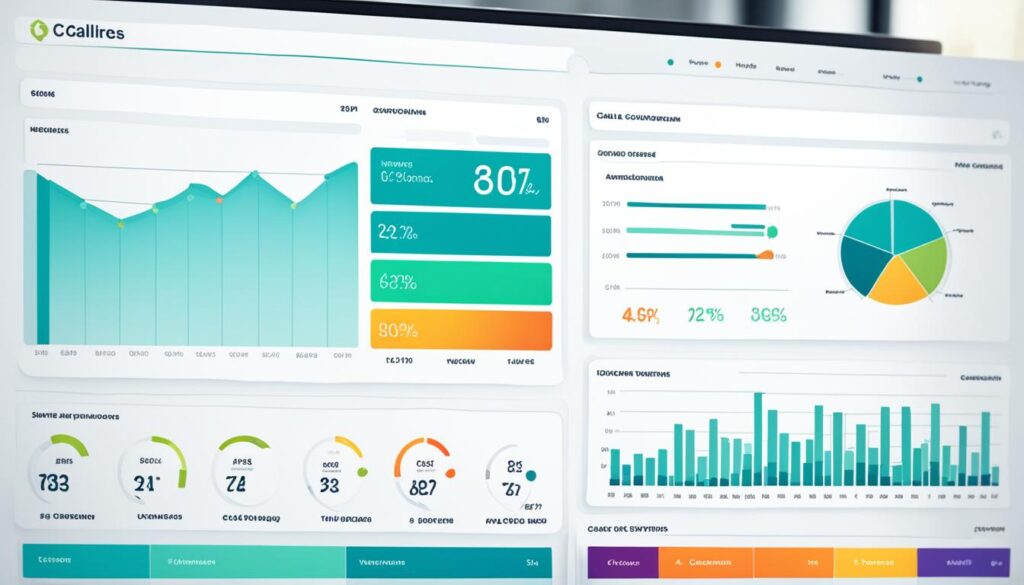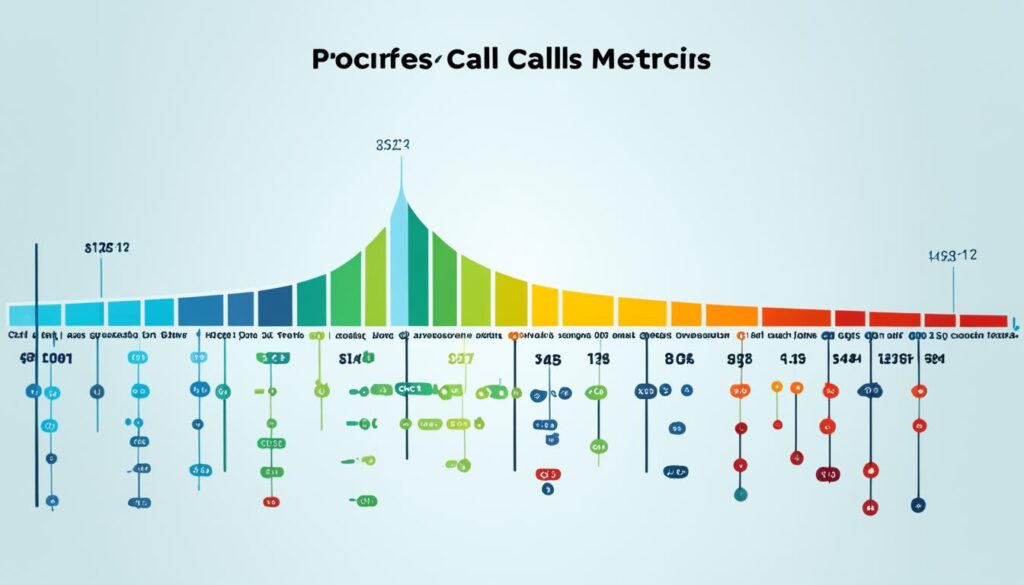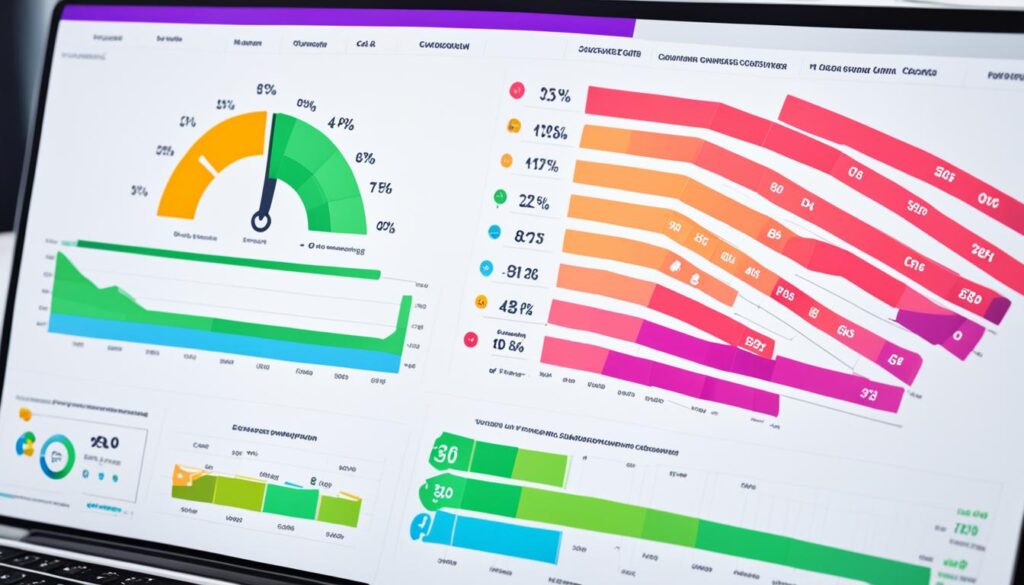When it comes to measuring the success and efficiency of your call center, call center metrics are the key performance indicators you need to really focus on. These metrics provide valuable insights into your agents’ productivity and the quality of your customer support, allowing you to identify areas for improvement and enhance the overall customer experience. By tracking these metrics, you can ensure that your call center is meeting its goals and objectives.
In this article, we will explore the key call center metrics that you should pay attention to. Whether you’re looking to optimize agent performance, evaluate customer satisfaction, or measure your call center’s operational efficiency, these metrics will provide you with the necessary data to make informed decisions and drive your call center’s success.
Customer Experience Metrics
Customer experience metrics play a crucial role in evaluating the quality of support your customers receive. These metrics provide valuable insights into their satisfaction levels, the ease at which their issues are resolved, and their loyalty to your brand. By focusing on these metrics, you can gain a deeper understanding of your customers and make data-driven decisions to enhance their experience.
There are key customer experience metrics that you should prioritize:
- CSAT scores: CSAT (Customer Satisfaction) scores measure how satisfied your customers are with their interactions with your call center. By collecting feedback from post-interaction surveys, you can gauge the overall level of satisfaction and identify areas for improvement.
- QA scores: QA (Quality Assurance) scores help assess the performance of your call center agents. By evaluating their adherence to quality standards, you can monitor their effectiveness in delivering exceptional customer service.
- Net Promoter Score (NPS): NPS is a widely used metric that measures customer loyalty and their likelihood to recommend your brand to others. By understanding your NPS, you can identify areas to improve customer loyalty and increase brand advocacy.
- Customer Effort Score (CES): CES measures the level of effort customers have to put in to resolve their issues. By minimizing customer effort, you can enhance their overall experience and satisfaction.
- First Contact Resolution (FCR): FCR tracks the percentage of customer issues that are resolved on the first contact. It is a critical metric as it contributes to customer loyalty and reduces the need for additional interactions.
By tracking these customer experience metrics, you can gain actionable insights into how to improve your call center operations and deliver exceptional customer service.
Agent Performance Metrics
When it comes to evaluating the productivity and efficiency of your call center agents, agent performance metrics play a crucial role. By tracking and analyzing these metrics, you can identify areas for improvement and optimize your agents’ performance to enhance overall call center efficiency.
Active Waiting Calls
One important metric to consider is the number of active waiting calls. This metric measures the ratio between the calls agents are actively handling and the ones that are on hold. By monitoring this metric, you can ensure that your agents are effectively managing their workload and maintaining a balance between ongoing calls.
Average Speed of Answer
The average speed of answer is another key metric that reflects the efficiency of your call center. It tracks the time it takes for your agents to answer incoming calls. By minimizing this metric, you can decrease customer wait times and improve overall customer satisfaction. Additionally, by setting benchmarks for average speed of answer, you can motivate your agents to handle calls promptly.
Average Talk Time
The average talk time metric measures the duration of agent-customer interactions. It helps you evaluate the efficiency of your agents’ conversations and identify opportunities for improvement. By analyzing this metric, you can identify agents who may need additional training to shorten talk times or who excel in efficient communication.
“Monitoring these agent performance metrics allows you to identify areas for improvement and optimize your call center operations.”
Overall, by measuring and analyzing call center efficiency metrics such as active waiting calls, average speed of answer, and average talk time, you can gain valuable insights into your agents’ performance. This data-driven approach enables you to make informed decisions, improve agent productivity, and enhance the overall efficiency of your call center operations.

Call Inception Metrics
In the initial stages of customer contact, call inception metrics play a crucial role in ensuring prompt and efficient customer service. By monitoring these metrics, call centers can optimize their operations and enhance the overall customer experience.
- Average First Response Time: This metric measures the time it takes for agents to respond to customer queries. A lower average first response time indicates faster customer service, leading to higher customer satisfaction. Prompt response times are key to building strong customer relationships and reducing customer frustration.
- Average Hold Time: As customers often have to wait on hold during their call, measuring the average hold time is essential for understanding the customer experience. High average hold times can indicate long wait times, which may lead to customer dissatisfaction. Minimizing hold times is important for enhancing the overall call center experience.
- Call Abandonment Rate: This metric represents the percentage of calls that are abandoned by customers before speaking to an agent. A high call abandonment rate can be a sign of long hold times or a lack of available agents. Monitoring and reducing call abandonment rates is crucial for improving customer satisfaction and ensuring all customer inquiries are addressed.
- Service Level Rate: The service level rate measures the percentage of calls that are answered within a specific timeframe. This metric is typically defined by service level agreements (SLAs) and reflects the call center’s ability to meet customer demand. A high service level rate ensures that customers receive timely assistance, resulting in improved customer satisfaction and loyalty.
By focusing on these call inception metrics, call centers can not only streamline their operations but also deliver exceptional customer service. Monitoring and optimizing these metrics ultimately contribute to a more efficient and customer-centric call center environment.

Call Center Operations Metrics
Call center operations metrics play a crucial role in assessing the overall performance and efficiency of your call center. By tracking these metrics, you can gain valuable insights that will help you optimize your operations and ensure smooth functioning.
Calls Handled
One important metric to track is the number of calls handled. This metric provides an indication of the call volume your agents are handling and helps you assess their workload. By monitoring this metric, you can ensure that you have sufficient resources to handle the incoming calls effectively.
Cost per Call
Another key metric is the cost per call. This metric calculates the average cost of each contact made by your call center. Analyzing this metric allows you to assess the financial impact of each call and identify opportunities for cost optimization.
Call Arrival Rate
The call arrival rate measures the rate at which calls are received by your call center. By monitoring this metric, you can identify the peak periods of call volume, enabling you to optimize staffing and scheduling to meet the demand effectively.
Peak-Hour Traffic
Understanding your call center’s peak-hour traffic is essential for effective resource management. By identifying the periods of highest call volume, you can allocate resources efficiently and ensure that your agents are available to handle the influx of calls during these peak hours.
By keeping a close eye on these call center operations metrics, you can gain a comprehensive understanding of your call center’s performance and make data-driven decisions to improve efficiency, allocate resources effectively, and provide the best possible customer service.
A well-optimized call center can handle high call volumes efficiently, while providing excellent customer service, ensuring customer satisfaction and loyalty.

Why are Call Center Metrics Important?
Call center metrics play a crucial role in the success and efficiency of your call center operations. By tracking and analyzing these metrics, you can measure performance, identify areas for improvement, and deliver exceptional customer service.
One of the key benefits of call center metrics is the ability to make data-driven decisions. By collecting and analyzing data, such as call volume, wait times, and agent performance, you can gain valuable insights into your operations. This data allows you to optimize resource allocation and ensure that you have the right number of agents available to handle customer calls.
Call center metrics also enable you to monitor agent productivity. By tracking metrics such as call handling time, average speed of answer, and active waiting calls, you can identify agents who may need additional training or support. This helps you improve overall call center efficiency and ensure that your agents are performing at their best.
Customer satisfaction is another critical aspect of call center metrics. By measuring metrics such as customer satisfaction scores, you can evaluate the quality of customer support and identify areas for improvement. This feedback allows you to address customer concerns promptly, enhance the customer experience, and build customer loyalty.
“Call center metrics enable businesses to make data-driven decisions, optimize resource allocation, and enhance overall efficiency.”
Moreover, call center metrics help track progress over time and ensure that your call center is meeting its goals and objectives. By setting benchmarks and regularly measuring metrics such as first contact resolution rates, call abandonment rates, and service level rates, you can gauge your call center’s performance and make necessary adjustments to improve efficiency and customer satisfaction.
In conclusion, call center metrics are essential for call center analytics, call center metrics tracking, and call center efficiency measurement. By leveraging these metrics, businesses can gain insights into their call center operations, optimize agent performance, and deliver outstanding customer service.

What Industry Standard Call Center Metrics are there?
In the world of contact centers and customer service, measuring performance and ensuring success is crucial. To gauge the effectiveness of your call center operations, it’s important to track industry-standard call center metrics. These metrics can be classified into agent-specific productivity metrics, customer experience metrics, and call center operational metrics.
Agent-specific productivity metrics are performance indicators that focus on individual agent efficiency. They include average handling time, which measures the average duration of agent-customer interactions. Another important metric is the utilization rate, which evaluates the percentage of time agents spend handling calls versus their available time.
Customer experience metrics play a vital role in assessing customer satisfaction and loyalty. For instance, first contact resolution measures the percentage of issues resolved on the first interaction with the customer. Customer satisfaction score (CSAT) and net promoter score (NPS) provide insights into customer happiness and loyalty, respectively.
Finally, call center operational metrics give you an overview of the overall functioning of your contact center. These metrics include average speed of answer, which evaluates how long customers wait before an agent answers their calls. By monitoring these industry-standard call center metrics, you can analyze, optimize, and enhance your call center’s performance to deliver exceptional customer service.
FAQ
What are call center metrics?
Call center metrics are key performance indicators (KPIs) that measure the success and efficiency of a call center. These metrics track agent productivity and the quality of customer support, helping businesses identify areas for improvement and enhance the overall customer experience.
What customer experience metrics should call centers focus on?
Call centers should focus on customer experience metrics such as CSAT scores (customer satisfaction), QA scores (agent performance), NPS (customer loyalty), CES (customer effort), and FCR (first contact resolution). These metrics provide insights into customer satisfaction, ease of issue resolution, and loyalty, helping call centers optimize their customer support.
What agent performance metrics are important for call centers?
Important agent performance metrics for call centers include active waiting calls, average speed of answer, and average talk time. Active waiting calls measure the number of calls handled vs. those on hold, average speed of answer tracks the time it takes for agents to answer calls, and average talk time measures the duration of agent-customer interactions. These metrics help evaluate agent productivity and identify areas for improvement.
What are call inception metrics and why are they important?
Call inception metrics focus on the initial stages of customer contact. These metrics include average first response time, average hold time, call abandonment rate, and service level rate. Monitoring these metrics is important to ensure prompt and efficient customer service, as they track the time it takes for agents to respond, the time customers spend on hold, the percentage of abandoned calls, and the percentage of calls answered within a specific timeframe.
What call center operations metrics should be measured?
Call center operations metrics that should be measured include the number of calls handled, cost per call, call arrival rate, and peak-hour traffic. These metrics provide insights into the overall performance and efficiency of the call center, helping optimize operations and resource allocation.
Why are call center metrics important?
Call center metrics are important for measuring performance, identifying areas for improvement, and delivering exceptional customer service. These metrics enable call centers to track and analyze data, monitor agent productivity, and evaluate customer satisfaction. By measuring call center metrics, businesses can make data-driven decisions, optimize resource allocation, and enhance overall efficiency.
What are some industry-standard call center metrics?
Industry-standard call center metrics include agent-specific productivity metrics such as average handling time, utilization rate, and speed of answer. Customer experience metrics include first contact resolution, customer satisfaction score, and net promoter score. These metrics provide a comprehensive overview of call center performance and enable organizations to deliver optimal customer service.
